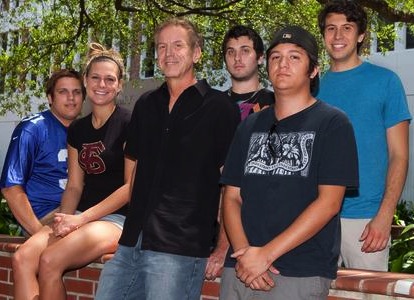
Imagine hurtling toward a massive black funnel cloud in a van equipped with camera gear and Internet access.
Though instinct urges most of us to run, Florida State University geography professor Jim Elsner and four of his students are doing just the opposite: They’re chasing the monster.
On May 29, Elsner and a team of undergraduate and graduate students embarked on a week-long storm chasing expedition in the Great Plains.
Elsner, who is teaching a summer course about tornadoes and severe weather, is working with students to examine why severe weather occurs and how it might change with global warming.
As part of the undergraduate course, “Chasing Storms,” Elsner is taking four volunteer students on an actual chase. They will return Thursday, June 7.
The team is pursuing the storms in a 12-passenger rental van equipped with camera gear and Internet access to follow real-time weather radar. The rest of the class is following their progress via a live video feed.
“Storm chasing has become a fairly routine business,” Elsner said, “but only a few universities are doing it at the undergraduate level.“
The journey beganin Denver and has been proceeding to areas where bad storms are predicted.
“Where we go will depend on the weather,” Elsner said. “We could end up in Nebraska, Kansas, Oklahoma, North Texas or out on the plains of eastern Colorado.”
In the United States, tornadoes are most frequent in the plains between the Rocky and Appalachian mountains, an area sometimes called “Tornado Alley.” Texas reports more tornadoes than any other state; Kansas and Oklahoma rank second and third, respectively, for sheer number of tornadoes reported but report more per land area than Texas. Florida also reports a high number and density of tornadoes, though only rarely do they approach the strength of those that sometimes strike the southern Plains.
Ultimately, Elsner hopes that through storm chasing, he will get undergraduate students so interested in environmental studies that they will pursue graduate degrees in related academic fields.
“The idea is to get students excited about environmental studies,” Elsner said. “We’ll have lots of face-to-face time to talk about research and how we will study this.”




